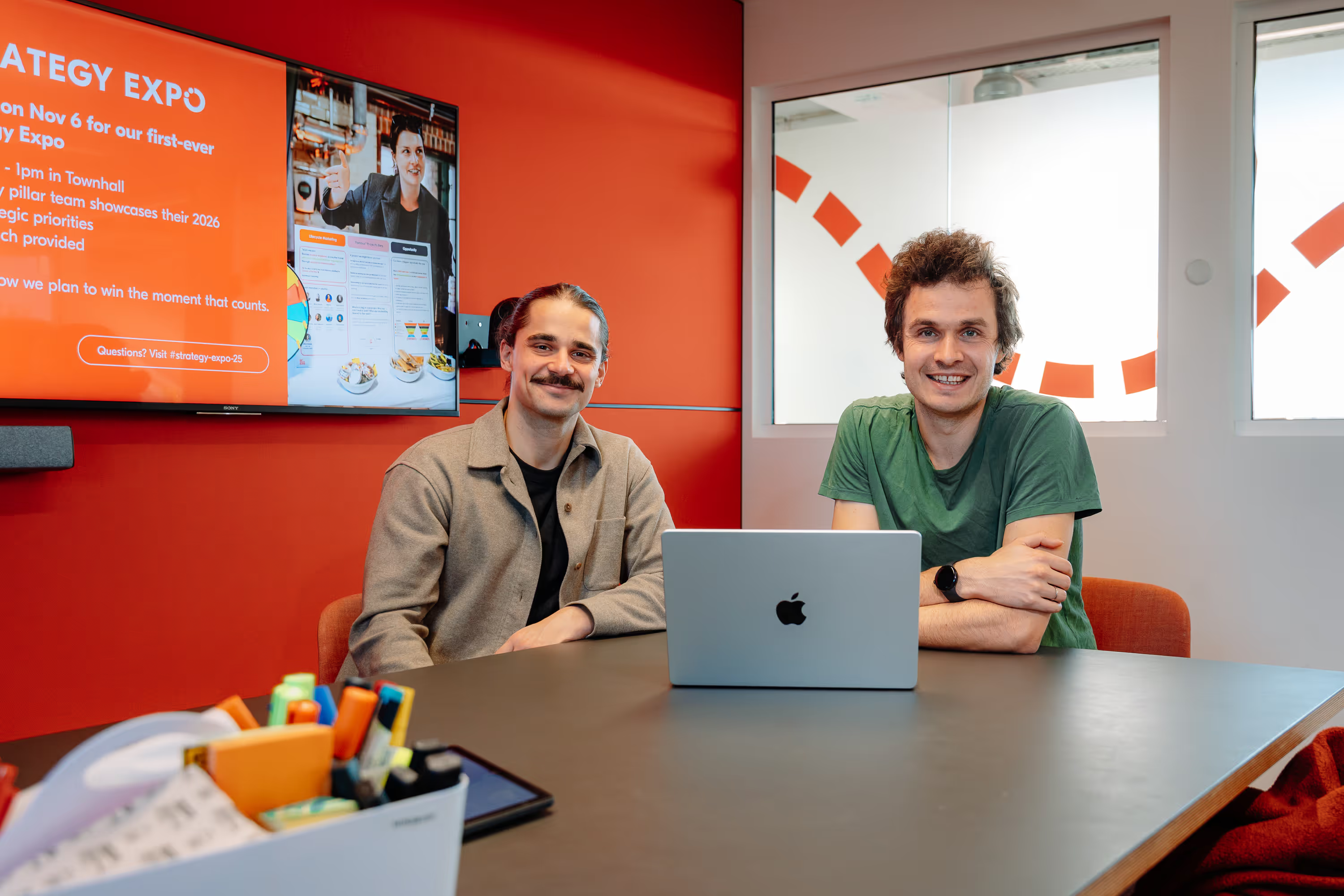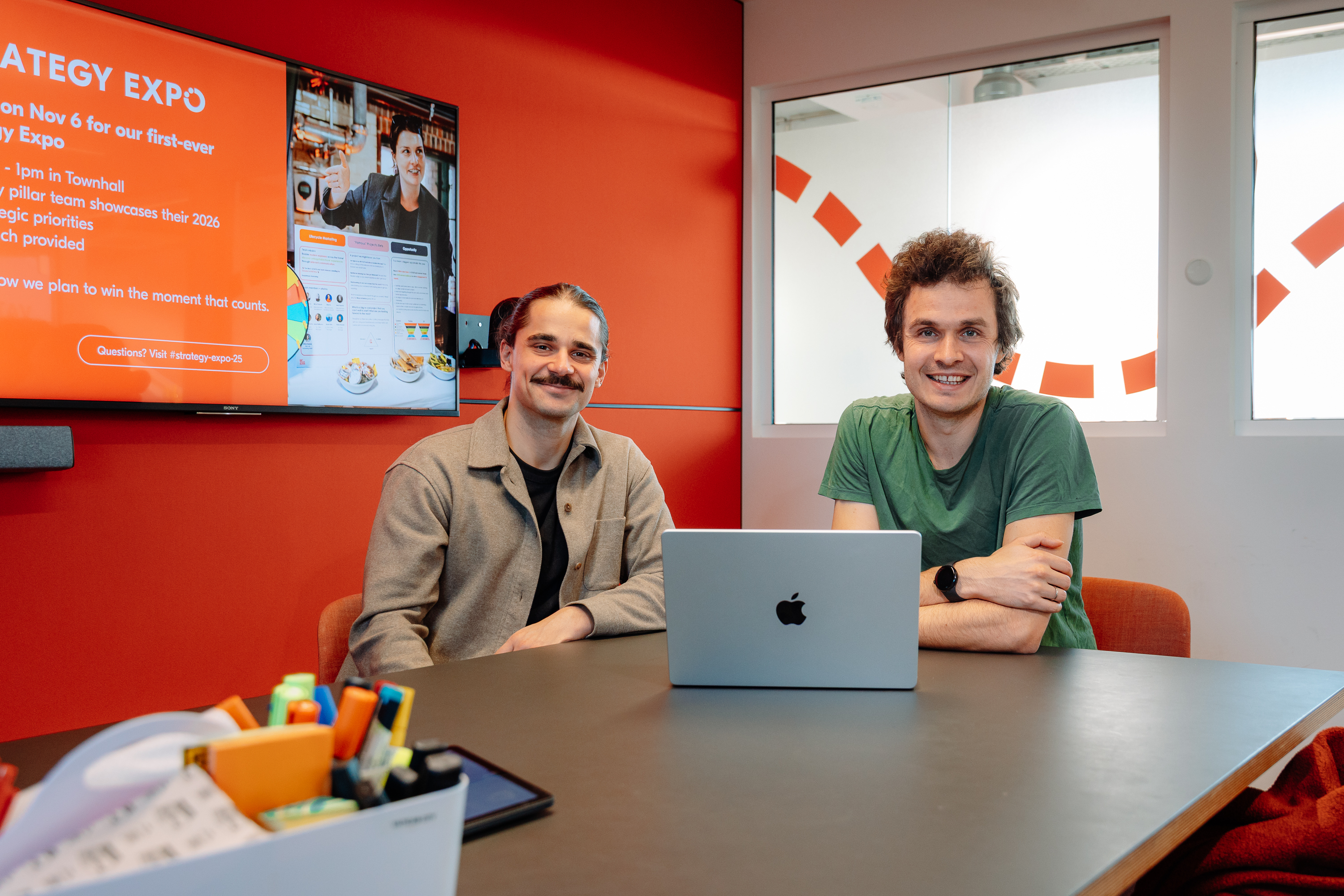What it Means to be a Product Manager at GetYourGuide
Our Chief Product Officer at GetYourGuide, Ameet Ranadive, explains the three critical skills that product managers at GetYourGuide need to deliver customer and business impact.
.avif)
Key takeaways:
Ameet Ranadive, Chief Product Officer at GetYourGuide, dives into the three critical skills product managers (PM) at GetYourGuide need to deliver customer and business impact. He explains why these skills are essential in the context of our core values and organizational structure. The CPO also provides a handy reading list of books and articles to help you better understand our frameworks for communication and decision-making.
When candidates consider GetYourGuide for product manager career opportunities, they naturally ask, “What does it mean to be a PM at GetYourGuide?” After all, the role of product manager means different things at different companies.
{{divider}}
At GetYourGuide, being a PM is all about driving customer and business impact. Our job is to ship products that solve important customer problems. By delivering valuable solutions to these problems, we motivate our customers to buy travel experiences from us for current and future trips. And by providing this value to our customers, we also create impact for the business — in terms of driving up conversion rates and revenue, increasing customer loyalty, and improving our marketing efficiency.
In order to drive customer and business impact with our products, GetYourGuide product managers must use skills in three areas:
- Execution: define your product, ship it, and measure its impact
- Leadership: motivate your teams, influence others, and evangelize your products
- Vision: develop a long-term product vision using customer and competitor insights
Let’s take a deeper look at each of these skill areas.
Execution
The foundational skill for any successful product manager is execution. We can only create customer value and impact if we actually ship products. “Ideas are cheap, execution is everything,” is an often repeated mantra for PMs.
With product execution, there are many activities required, but I wanted to call out two: defining the product and making effective decisions.
Defining the product
For PMs, execution begins with defining the product. We start our product definition by partnering with our user research and data analytics teams to identify the most critical customer problems. From there, we will brainstorm potential solutions to these problems by involving a wide variety of colleagues: product and content design, engineering, research and analytics, and potentially other stakeholders. We use a version of the RICE prioritization framework in order to identify the products with the best trade-off between reach, impact, confidence, and effort.
We use the OKR process in order to align the entire company around the most important priorities. PMs will ensure that we are delivering products with the highest customer value and the greatest impact on company OKRs and metrics. We will often evaluate the “reach” and “impact” parts of our RICE prioritization in the context of company metrics and OKRs.
In addition, we follow a number of other best practices in order to improve our product definition:
- Simplify our products by focusing on a few core features and ignoring everything else. (“Start with something simple”)
- Evaluate both customer value and differentiation in order to pick winning product features
- Take an iterative, hypothesis-driven approach to product development by adopting the “Strong opinions, weakly held” mindset.
Making effective decisions
Along the path of delivering a product to market, teams must make a number of important decisions — around product scope, quality, goals, schedule, trade-offs, and so on. Our PMs are responsible for helping their teams make effective decisions during these moments.
At any point during the product development cycle, we ask ourselves what the most important decisions are that will have the greatest impact on the success of the product. We then evaluate each decision based on the situation and the audience.
- Situation: How much time do you have? How high are the stakes? How much uncertainty is there?
- Audience: How skeptical is your audience? How much buy-in do you need?
Based on the situation and audience, we would then make the call about whether to “ask” or “tell” our team and stakeholders regarding this decision.
As PMs work towards helping their teams get to a quality decision, there are a number of tools we can use:
- Framing decisions as either Type 1 (not reversible) or Type 2 (reversible) decisions
- Avoiding maximizing behavior when satisficing will do
- Creating a Day One hypothesis to tackle complex decisions (also used as the “strong opinion” part of Strong Opinions, Weakly Held)
- Being “directionally right, same order of magnitude” to avoid analysis paralysis
- Framing decisions with “what do you have to believe?” questions
Leadership
Product managers work with their teams and stakeholders in order to execute. Thus, we expect PMs to demonstrate leadership in order to motivate their teams, negotiate with and influence others, and sell their vision internally and externally.
There are already many books and articles on leadership, so here I will focus on a few best practices that we share with our PM team. PMs need to have the right mindset, must work hard at earning and building trust, and have excellent communication and persuasion skills.
The right mindset
Our PMs work in missions, with extended teams of engineers, designers, data scientists, researchers, as well as colleagues from marketing, operations, and customer service. Many of these colleagues look to the product manager for guidance and direction, especially in the face of uncertainty and during challenges or setbacks. As such, it is critical for PMs to have the right mindset to lead teams: they must demonstrate a growth mindset, resilience, and grit.
Earning and building trust
Product managers practice “influence without authority.” They must be able to convince others to provide support and resources to their projects. In order to do this, PMs must earn and build trust with their colleagues and with their management.
One important approach for building trust is by being a “giver” rather than a “taker.” Givers give more than they get, and they focus on others’ needs. Takers take more than they give, and they focus on their own needs. According to Wharton professor Adam Grant in his book Give and Take, givers are more successful than takers over the long term in three dimensions of work:
- Building networks: givers build broader networks and leverage the value of dormant ties.
- Collaboration: givers demonstrate expedition behavior (putting the group’s goals and mission ahead of your own) and readily share credit with their team for any achievements.
- Communication: givers tend to ask questions and seek advice, which builds trust, increases their own knowledge, and builds commitment with their audience.
We encourage PMs to operate as givers to become more likely to earn the trust of teams that they must influence without authority.
Excellent communication and persuasion skills
In order to influence others to lend their support to a product proposal or direction, PMs must use a variety of communication and persuasion skills.
To effectively communicate with executives and stakeholders, PMs can use the Pyramid Principle and the Rule of 3 (most effectively, in combination). In both written and verbal communication, PMs should always ask themselves “Where’s the So What?” and push themselves to synthesize insights, not just summarize information.
In order to motivate large audiences to buy into their longer-term vision, PMs must create messages that stick. According to authors Chip Heath and Dan Heath in their book Made to Stick, compelling messages that stick are simple, unexpected, concrete, credible, emotional, and stories.
PMs are able to take complex and ambiguous concepts, and communicate them in simple and concrete language. We inspire our teams and the organizations to support our product vision with appeals to emotion and through compelling storytelling — often partnering with our colleagues in design to visualize our user narratives.
Product vision
Execution and leadership are not enough in order to deliver valuable products over a long period of time. Our goal is to delight our customers with innovative solutions that may require sustained investment over a period of time. In order to build the buy-in and support of our teams over a longer time horizon, we must develop and communicate a compelling product vision.
{{quote}}
Customer insights
In order to develop customer insights, PMs will often partner with our user research team to do generative studies to better understand customers’ motivations, mindset, and latent needs when they are planning or traveling. We follow the principles of human-centered design in order to develop these customer insights.
Future state of our product
To develop the future state of our product, PMs will often engage in brainstorming workshops with their product teams and stakeholders. We use Miro boards and even create lightweight sketches to generate ideas. We encourage teams to follow some of the principles that Wharton professor Adam Grant shared in his book Originals:
- Question defaults: don’t assume that the defaults must apply; use your curiosity to explore whether a better solution exists.
- Generate a lot of ideas: open your brainstorm to many different inputs and ideas and withhold judgment up front; “When it comes to idea generation, quantity is the most predictable path to quality.”
- Get peer feedback: overcome your own biases by asking peers to evaluate your ideas; they can provide an objective and unbiased perspective.
Using these brainstorming sessions, PMs will lead their product teams and stakeholders to converge on a longer-term product vision. We will articulate this long-term product vision through using a version of Amazon’s Working Backwards process, or by crafting a user story as a visual narrative.
---------
I began this post by sharing what the ultimate goal for a GetYourGuide PM is: it’s all about driving customer and business impact. Our job is to ship products that solve important customer problems.
In order to deliver valuable products and drive customer and business impact, PMs leverage skills in three key areas: execution, leadership, and vision.
Execution is the foundational skill for GetYourGuide PMs. We must use excellent judgment in order to define the right product and have the maximum impact on business metrics. We also use a variety of techniques in order to make effective decisions quickly in the face of uncertainty.
PMs must demonstrate leadership in order to influence others and motivate their teams. We must first have the right mindset ourselves, then we must earn and build trust with our teams, and finally we must communicate concisely and persuasively.
Finally, PMs must develop and communicate a longer-term vision in order to create support and buy-in from teams and stakeholders over a sustained period of time. We develop a deep understanding of our customers, lead our teams to brainstorm novel solutions, and visualize a compelling future state of our product.
Although being a PM can sometimes be challenging, it’s also a very rewarding career - especially here at GetYourGuide. We hope that after learning what it means to be a PM here, you’re motivated to join us on our mission to give the whole world access to incredible experiences.
Creating a vision starts by deeply understanding our customers’ needs — what they are now, and how they may develop over the coming months and years. We then combine these customer insights with our company strategy and goals, as well as our awareness of the competitor landscape, in order to develop a vision of the future state of our product.

.jpg)




